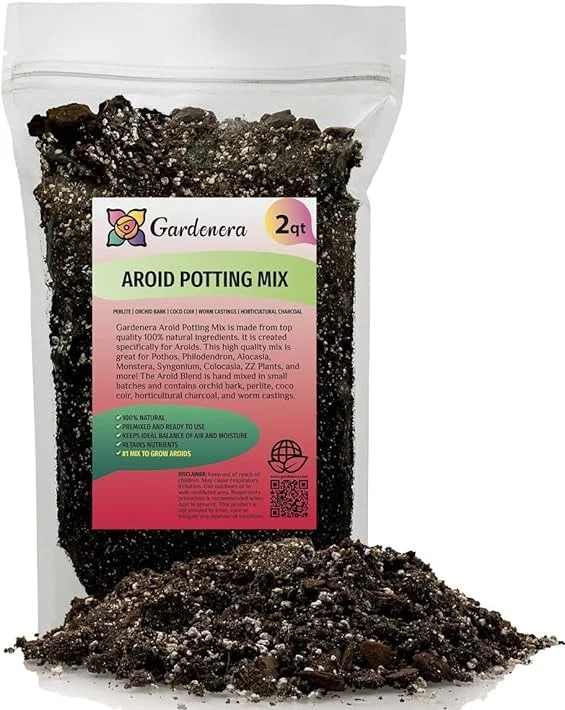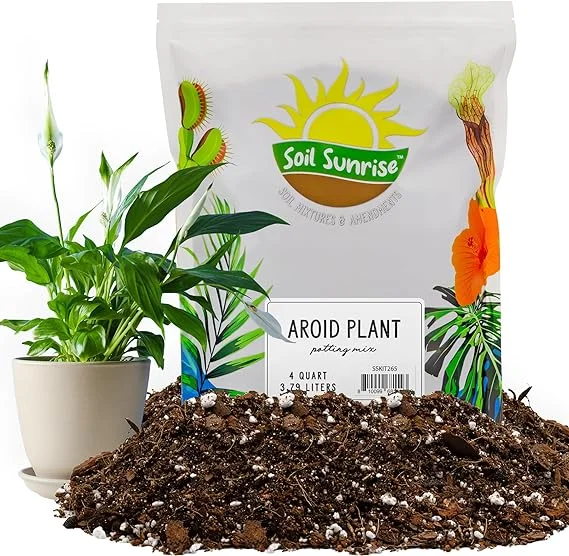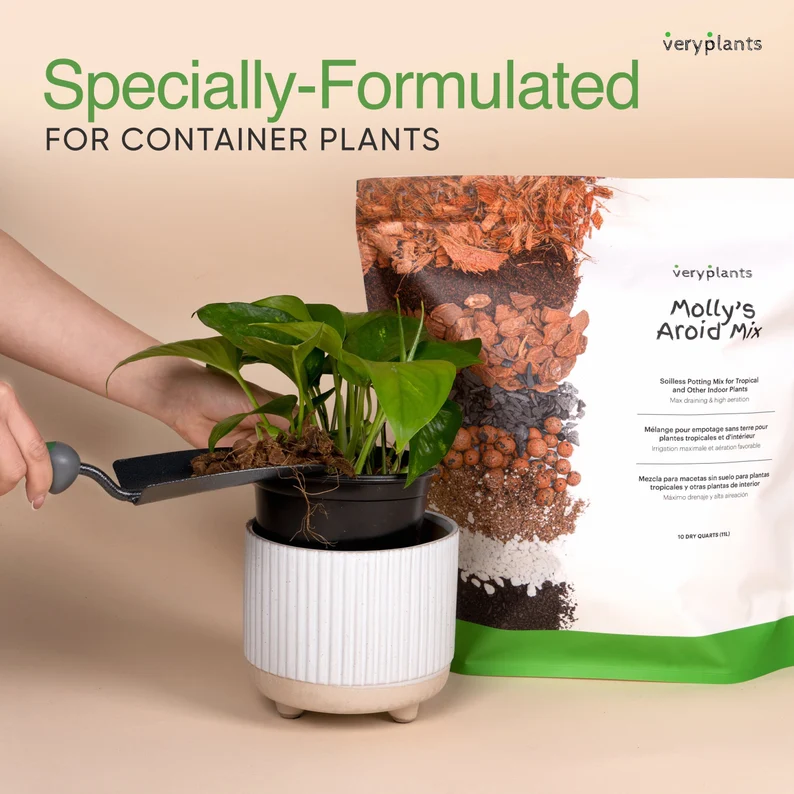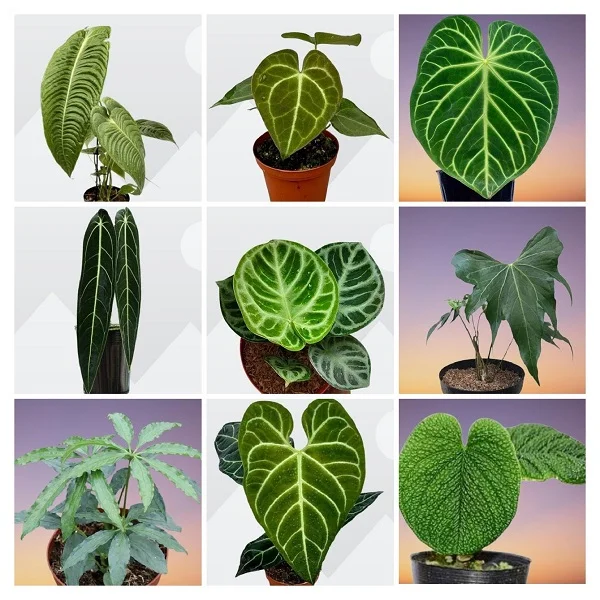How to Grow, Care and Propagate Anthurium villenaorum
Some links in this post may be affiliate links
Anthurium villenaorum blossoms in bright indirect light, moderate warmth, above average humidity and consistently moist, fertile, well-drained, aroids potting mix coupled with monthly feeding in the growing season.
Anthurium villenaorum is one of the popular Anthurium varieties with a compact growth and is considered one of the easiest of the Velvet Leaf Anthuriums which can bloom upto five times a year.
The spectacular teardrop shaped leaves vary in shades of light and dark green with prominent venation throughout the leaf.
The leaves in Anthurium villenaorum have a glossy and slightly corrugated texture which adds to its beauty. This makes it a sought-after plant and one of the best plants for the living room and a great conversation starter.
Anthurium villenaorum resembles Anthurium warocqueanum and anthurium regale but it has a more compact growth pattern.
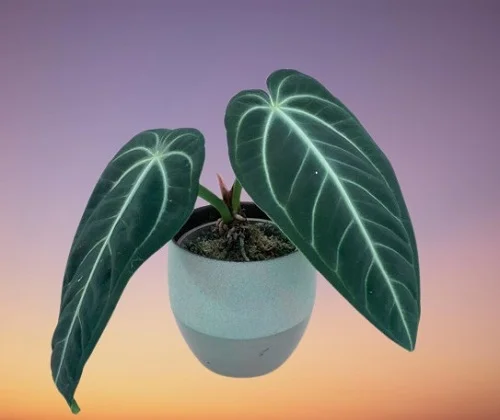
Botanical name: Anthurium villenaorum
Family: Araceae
Origin
Anthurium villenaorum is native to Peru and Ecuador where it grows on trees as an epiphyte in its natural habitat.
Size
The Anthurium villenaorum is a slow-grower but it can grow to a height of 1.8 M and a width of 1.5 M. The leaves can grow to about 29 in. in width.
Toxicity
Anthurium villenaorum like other Anthuriums is toxic to both humans and pets. It contain oxalate crystals which can cause digestive distress, breathing problems and skin irritation. Always wear gloves when handling the plant and wash your hands thereafter.
Where to Buy
Anthurium villenaorum are great plants for any collection. You may obtain these plants online on Etsy (Link to Etsy).
Anthurium villenaorum Care Indoors
Anthurium villenaorum prefers bright indirect light away from direct sunlight, average warmth of 16-270C, humidity of 60-70% and consistently moist, fertile, well-drained, aroids soil coupled with monthly feeding during the growing season.
Anthurium villenaorum requires pruning to keep it neat and also reduce pest and disease infestations. Repotting is only needed when it becomes pot-bound. Keep reading for more on these growing conditions and how to achieve them.
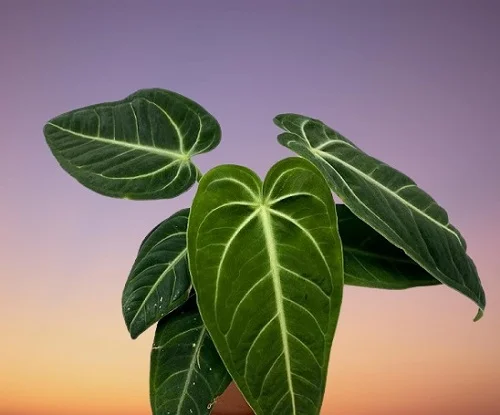
Watering
Water Anthurium villenaorum thoroughly and keep the soil moist at all times during the growing season. Reduce watering in the cold season to maintain the soil slightly moist but do not let the soil dry out completely.
Make sure that the pot has a drainage hole to prevent the soil from getting soggy as it can lead to root-rot and death of the plant.
Light Requirements
Anthurium villenaorum grows best in bright indirect light (filtered light). Keep it away from direct sunlight to avoid scorching the leaves.
Anthurium villenaorum can also be grown under grow lights if the natural lighting is not adequate. Take a look at these full spectrum grow lights available on Amazon.
Rotate the pot regularly to ensure that the plant receives light on all sides for uniform growth.
Temperature and Humidity
Anthurium villenaorum requires an average warmth of 16-270C to thrive. Keep it away from cold drafts to avoid sudden changes in temperature which can cause reduced growth.
Anthurium villenaorum thrives in high humidity of 60-70%. Increase humidity by setting the pot on a wet pebble tray or use a cool mist humidifier. Check out these techniques on how to raise humidity for houseplants.
Clean the leaves by damp-wiping with a soft cloth to get rid of dust. Do not leave water drops on the leaves as it may cause fungal infestations.
Potting Soil
The best soil for Anthurium villenaorum should be rich in organic matter and free-draining to prevent it from getting soggy while providing the required nutrients. Most potting mixes designed for aroids are good for this plant.
Fertilizer
Feed Anthurium villenaorum every 4 weeks during the growing period with a balanced, liquid fertilizer. Withhold feeding in the cold season as growth is minimal and feeding at this time can lead to fertilizer burn.
Regularly flush out accumulated salts from the soil by running a stream of water through the soil until the water comes out through the drainage hole. Allow it to run for a few minutes and repeat the process several times.
Repotting
Repot Anthurium villenaorum every 1-2 years at the beginning of the growing season. Use a pot one-size larger and free-draining soil that is rich in organic matter.
Ascertain that the pot has a drainage hole to prevent the soil from getting soggy as it can lead to root-rot and death of the plant. Check out these planters with drainage hole on Amazon.
Pruning
Pruning Anthurium villenaorum involves removal of yellow and dead leaves to maintain the plant neat and also discourage pest and disease infestations. Cut the leaves at the base of the stem with a sharp sterlized knife or a pair of scissors to avoid unnecessary injuries which can lead to disease infestations. Cut away any dead and wayward leaves to maintain the shape of the plant.
Propagation
Anthurium villenaorum can be propagated during the growing season from from splits by plant division.
How to propagate Anthurium villenaorum by plant division
Thoroughly water the Anthurium villenaorum at least one day before to make it easier to divide and also hasten establishment as well as reduce shock.
Take the Anthurium villenaorum out of its pot and carefully divide it into sections by pulling apart the roots. Ensure each section has adequate roots to hasten establishment.
Select a 6 or 8 inches pot and ensure that the pot has a drainage hole to prevent the soil from getting soggy as it can lead to rotting.
Fill the pot with loose, free-draining potting mix and make a hole in the center of the pot. Ensure that the hole is slightly wider than the root base of the section.
Place the section in the previously made hole and lightly firm the soil around the base while taking care not to bury it too deep; maintain the section at the same soil level it was in the previous pot.
Water the soil thoroughly and place the set up in a well-lit, warm place until the new Anthurium villenaorum is well established after which you can begin routine care.
Related: How to Propagate Anthurium Plants by 5 Easy Methods
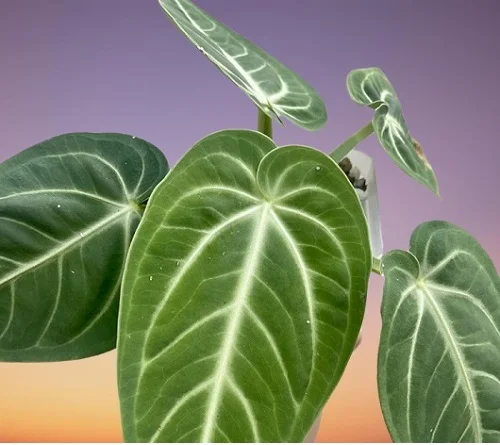
Anthurium villenaorum Problems
Anthurium villenaorum problems include yellow leaves, brown leaf tips, brown leaf spots, drooping leaves, pests and diseases among others. Keep reading for more on these problems, their remedies and solutions.
Pests
The common pests in Anthurium villenaorum are spider mites, aphids and fungus gnats. Isolate the affected plant to prevent spread to other plants and treat it with neem oil or insecticidal soap as per the manufacturer's instructions.
Diseases
Anthurium villenaorum is prone to root-rot disease which is more prevalent in soggy soil brought about by poorly drained soil. Maintain the soil moist but not soggy by ensuring that the pot has a drainage hole and that the soil is free-draining. Read on how to treat root-rot in houseplants.
Brown leaf spots
The brown leaf spots are sunburn marks caused by exposure of Anthurium villenaorum to direct sunlight. Move the plant to a shaded place or use a curtain to filter the light.
Drooping leaves and stems
There are four causes of drooping leaves and stems in Anthurium villenaorum. One cause of drooping leaves is low humidity. To up humidity, set the pot on a wet pebble tray.
The second cause of drooping leaves and stems in Anthurium villenaorum is incorrect watering; either underwatering or overwatering. Maintain the soil moist at all times during the growing season and never allow the soil ball to dry out completely. Read more on how to water houseplants the correct way.
The third cause of drooping leaves and stems in Anthurium villenaorum is too high temperature due to exposure to direct sunlight. Protect the plant from direct sunlight by filtering the light with a sheer curtain.
The fourth cause of drooping leaves and stems in Anthurium villenaorum is pests and diseases infestation. Regularly inspect the plant and take timely control measures for these pests.
Yellow leaves
One of the causes of yellow leaves in Anthurium villenaorum is soggy soil. Keep the soil moist but not soggy by ensuring that the pot has a drainage hole and that the soil is free-draining.
The second cause of yellow leaves in Anthurium villenaorum is cold drafts (cold air). Keep it away from cold drafts or place it away from windy doors and windows.
Brown leaf tips
Two reasons are responsible for brown leaf tips in Anthurium villenaorum. One reason for brown leaf tips is that the air is too dry. Set the pot on a wet pebble tray or use a cool mist humidifier to up the humidity.
The second reason for brown leaf tips in Anthurium villenaorum is soggy soil. Maintain the soil moist but not soggy by ensuring that the pot has a drainage hole and that the soil is free-draining.
You liked it? Share on social media.
Related Content
Amazon Associates Disclosure
Homeplantsguide.com is a participant in the Amazon Services LLC Associates Program, an affiliate advertising program designed to provide a means for sites to earn advertising fees by advertising and linking to amazon.com.
